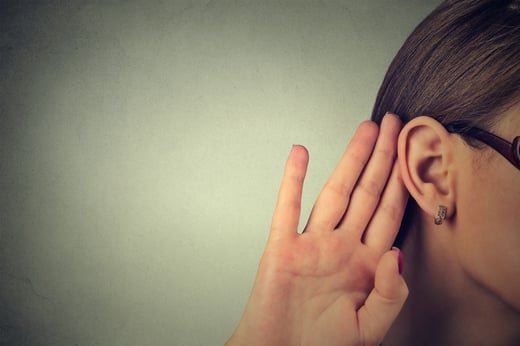 In 1983, Advertising Age magazine published an article in which the authors cited evidence that consumers prefer ear-oriented messaging as compared with eye-oriented messaging. Speech is the primary form of communication for human beings, and for advertisers, this fact holds significant implications. It means that advertising for the ear is more effective than print advertising that’s designed to be received by the eye.
In 1983, Advertising Age magazine published an article in which the authors cited evidence that consumers prefer ear-oriented messaging as compared with eye-oriented messaging. Speech is the primary form of communication for human beings, and for advertisers, this fact holds significant implications. It means that advertising for the ear is more effective than print advertising that’s designed to be received by the eye.
The human memory responds in different ways to visual images and auditory images. Visual images, stored in the mind’s iconic memory, fade away quickly, usually within about one second. Auditory images, stored in the mind’s echoic memory, linger much longer. An auditory image will begin to fade away after four to five seconds. In addition, the human mind can process the spoken word more quickly — in about 140 milliseconds — than a printed word, which takes about 180 milliseconds. These differences in processing speed and retention make it easier for a person to follow a train of thought and more clearly understand the message.
Consider that, over the last couple of decades, audiobooks have become increasingly popular, and more recently, podcasts have exploded in popularity. The reason goes beyond the ability to multi-task — listening to an audiobook on your daily commute or a podcast as you work out on the treadmill. It’s because audio engages the mind more effectively than print. The concept of “theater of the mind,” the same notion behind the popularity of radio dramas enjoyed by our grandparents, requires imagination and participation.
People prefer communication by ear — that is, spoken — rather than eye. They prefer to speak to others over the phone or face to face, as opposed to writing a letter or email. When they seek a pleasurable activity, people are far more likely to listen to music than they are to look at works of art.
So, what implications does this have for marketing? The authors of the Advertising Age article pointed out that written language must be “re-coded” in the mind — translated, in effect — into the equivalent of spoken words before the human brain can process it. In other words, speech is the primary form of communication among humans, and print is an imitation of speech. Moreover, consumers spend 85% of their time engaged with ear-oriented media such as radio and only 15% of their time engaged with eye-oriented media like newspapers and magazines.
When it comes to best practices for tailoring your advertising to your audience’s ear preference, a catchy jingle is a time-tested attention-grabber and can stick with your listener long after your commercial has ended. As an example, think of how we all memorized the alphabet. Setting your phone number to music can have the same effect.
Also, keep in mind the emotional impact of the music in your ads. Connecting on an emotional level can drive the consumer to make a purchase. Popular songs are great for evoking an emotional response and also provide a great “hook.” Music can boost a spot’s memorability and incite a specific reaction. Voice-overs can have a similar effect by conveying an appropriate emotion — scared, excited, nervous, calm, serious.
Carefully consider the use of sound effects to enhance your message as you are developing your ad. Sound effects can have a powerful impact, and if you use sounds that are irrelevant or detract from your ad, it will make your spot less effective.
The understanding that consumers prefer ear vs. eye advertising provides advertisers with the ability to create not only more effective radio ads but a more effective marketing strategy. When you consider all the reasons audio is more memorable than print, you can better allocate your marketing resources to improve ROI.